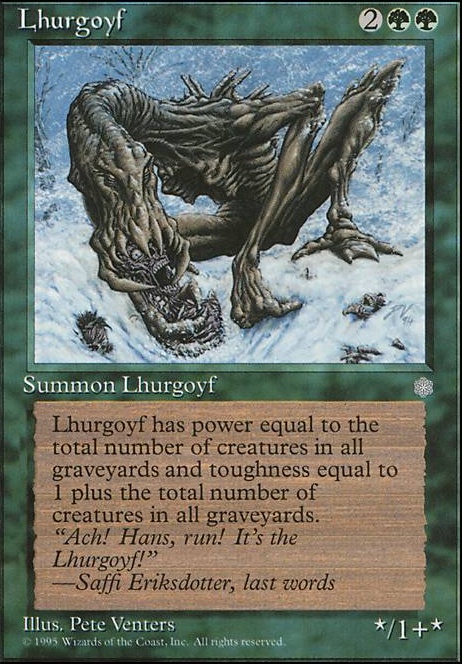Land (22)
Enchantment (12)
- 2x Animate Dead
- 1x Exploration
- 2x Gaea's Touch
- 1x No Mercy
- 1x No Rest for the Wicked
- 3x Pattern of Rebirth
- 1x Pestilence
- 1x Sylvan Library
Sorcery (4)
Creature (14)
- 3x Birds of Paradise
- 3x Lhurgoyf
- 2x Orcish Lumberjack
- 1x Spirit of the Night
- 2x Tinder Wall
- 3x Yavimaya Elder
Instant (8)
Sideboard
Enchantment (9)
Instant (4)
Sorcery (2)
Suggestions
Updates Add
Comments
Attention! Complete Comment Tutorial! This annoying message will go away once you do!
Important! Formatting tips — Comment Tutorial — markdown syntax
Please login to comment
| Top Ranked |
|
| Date added | 3 years |
| Last updated | 3 months |
| Legality | This deck is Casual legal. |
| Rarity (main - side) | 22 - 8 Rares 9 - 3 Uncommons 17 - 4 Commons |
| Cards | 60 |
| Avg. CMC | 2.45 |
| Folders | Searching For Something, Pre-Y2K, Amazing Deck Names (60): Casual. |
| Votes | |
| Ignored suggestions | |
| Shared with | |
| Views |

